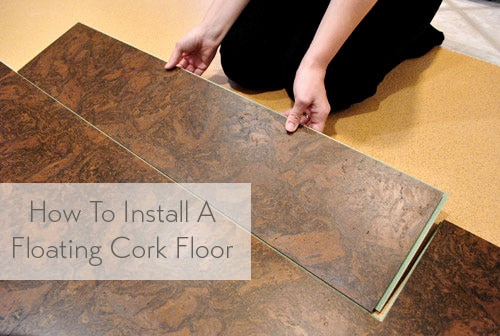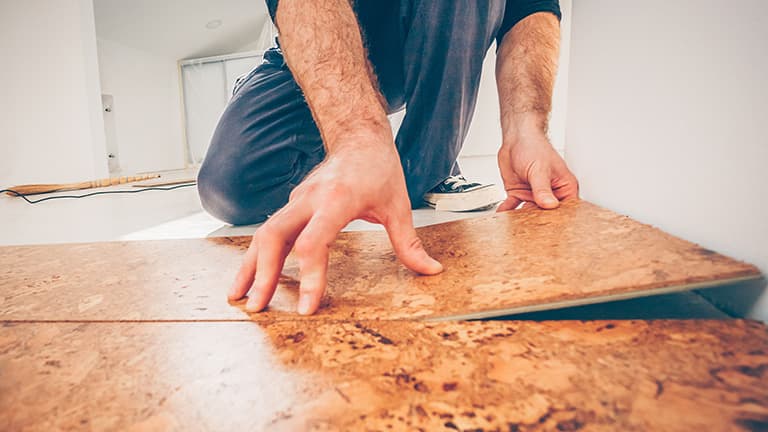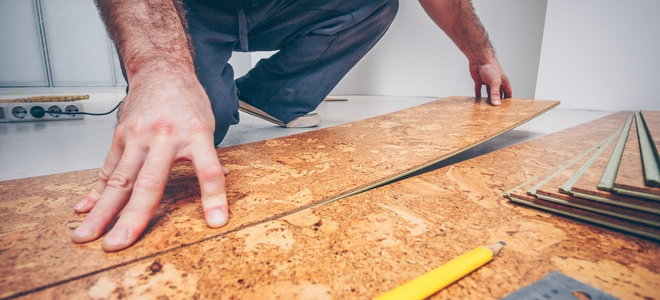Why Choose Cork for Your Floors
Cork is soft underfoot, making it a comfortable choice for any room where you stand for long periods. It has a slight bounce, which reduces pressure on joints. This natural cushioning makes it ideal for kitchens, playrooms, or home offices.

Beyond comfort, cork offers excellent insulation. It helps retain heat and dampens sound, creating a quiet and cozy atmosphere. Its insulating qualities also contribute to energy savings throughout the year.
Cork is made from the bark of the cork oak tree and is harvested without cutting the tree down. This makes it a renewable and eco-friendly flooring choice. If you’re looking for sustainable materials, cork is an option that supports long-term resource health.
Preparing the Subfloor Properly
Before laying cork, your subfloor must be smooth and level. Clean it thoroughly to remove any dirt or debris that could interfere with the cork planks. Uneven surfaces can cause gaps, lifting, or creaking over time.
If you’re laying cork over concrete, check for moisture. A vapor barrier is necessary to protect the cork from absorbing excess water, which can lead to swelling. For wooden subfloors, ensure they’re dry and tightly secured.
Take time to fix dips or bumps. Use a leveling compound to fill low spots and sand down any raised areas. A flat subfloor will keep your cork flooring stable, make installation easier, and help the finished product last longer.

Choosing Between Tiles and Planks
Cork flooring is available in tile and plank formats. Tiles are typically glued down and work well for permanent installations. They’re great in spaces where moisture might be a concern, like kitchens or basements.
Planks often use a floating system, clicking together without glue. These are easier for DIY projects and allow the floor to expand and contract naturally. They also make future removal or replacement much simpler.
Consider the room size and layout. Planks give a more seamless appearance, while tiles offer pattern options. Both are durable, so it comes down to the aesthetic and how involved you want the installation process to be.
Laying Floating Cork Planks
Start by placing underlayment if required by the manufacturer. This layer can help with sound reduction and adds a small moisture barrier. Begin installation in a corner and work your way across the room.
Snap the planks together using the tongue-and-groove edges. Use spacers along the walls to allow for expansion. Cork expands slightly with humidity, so leaving space at the edges prevents warping or buckling.
Cut pieces as needed to fit around doorways or odd corners. Use a fine-toothed saw for clean cuts. Keep a steady pace, checking alignment as you go. This ensures the finished floor looks straight and professionally installed.

Gluing Down Cork Tiles
For glued installations, use adhesive specifically made for cork. Apply it evenly with a trowel across a small area. Press each tile firmly into place, making sure the edges line up tightly with no gaps.
Let the adhesive cure for the recommended time before walking on the surface. Once it sets, the tiles stay firmly in place. This method is ideal for high-traffic rooms that need extra durability and stability.
Be patient during layout and spacing. Start in the center of the room and work outward for a balanced appearance. Dry-lay a few tiles beforehand to get a sense of the final pattern and spacing before committing to glue.
Sealing and Maintaining Your Floor
After the cork is laid, applying a sealant helps protect it from stains and water. Most cork products come pre-finished, but adding an extra coat provides more durability, especially in kitchens or entryways.
Routine cleaning is easy—just sweep or vacuum regularly and wipe up spills quickly. Avoid soaking the floor, as cork is naturally absorbent. Mild cleaners work best to keep the finish intact without causing damage.
Over time, you can refresh the surface with a new layer of sealant. This keeps the cork looking new and extends its lifespan. With regular care and attention, cork flooring can remain comfortable, warm, and attractive for many years.

Images Related to Laying Cork Flooring
How To Install A Floating Cork Floor Young House Love

Cali Cork Flooring Floated Click-lock Installation

Cork Flooring: What Are the Pros & Cons?

Pros and Cons of Installing Cork Flooring DoItYourself.com

Cork Works: Installing Cork Flooring – Mother Earth Living

Related articles: